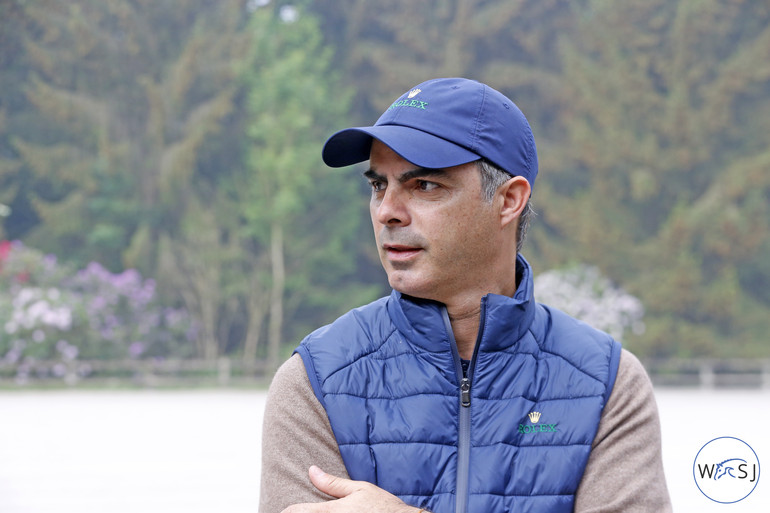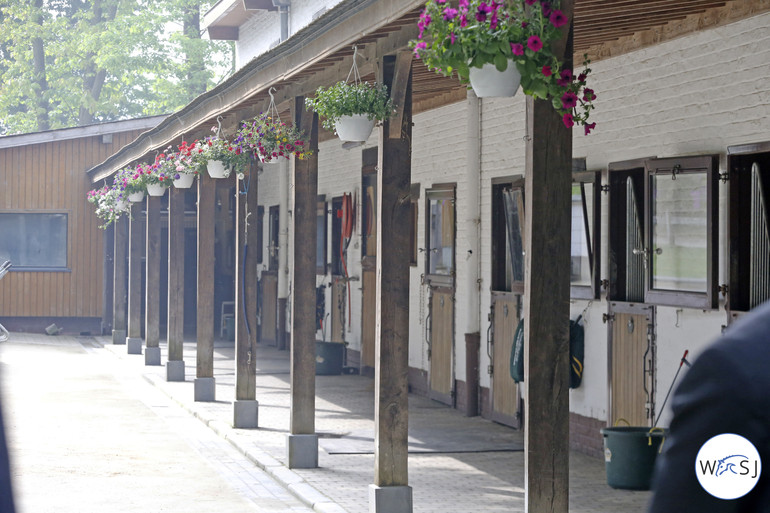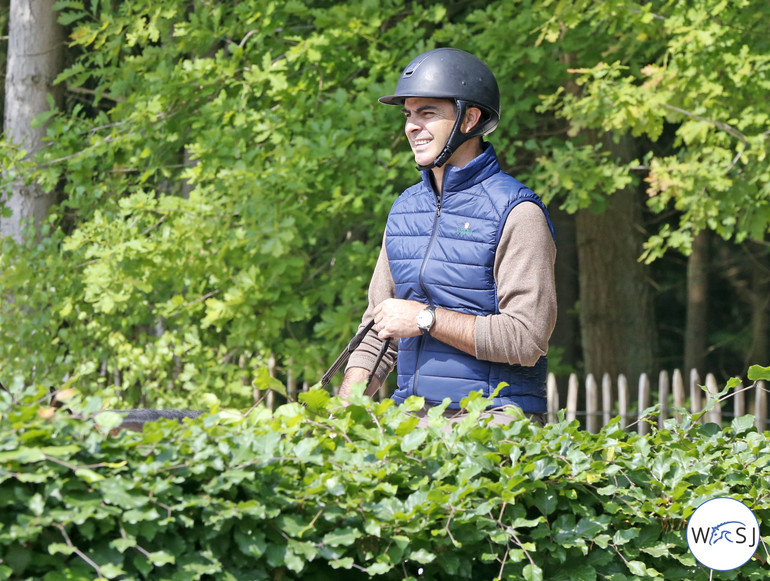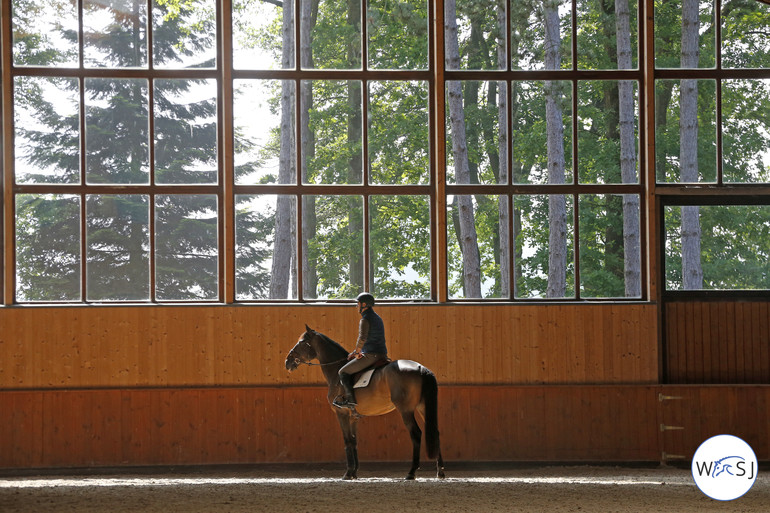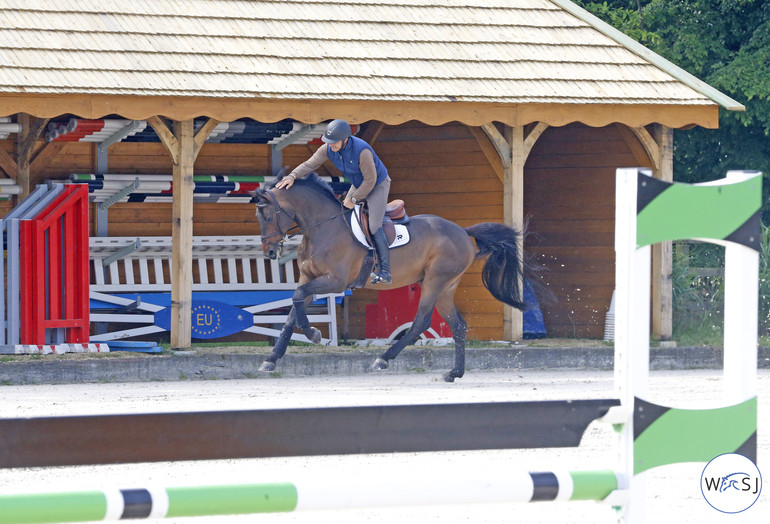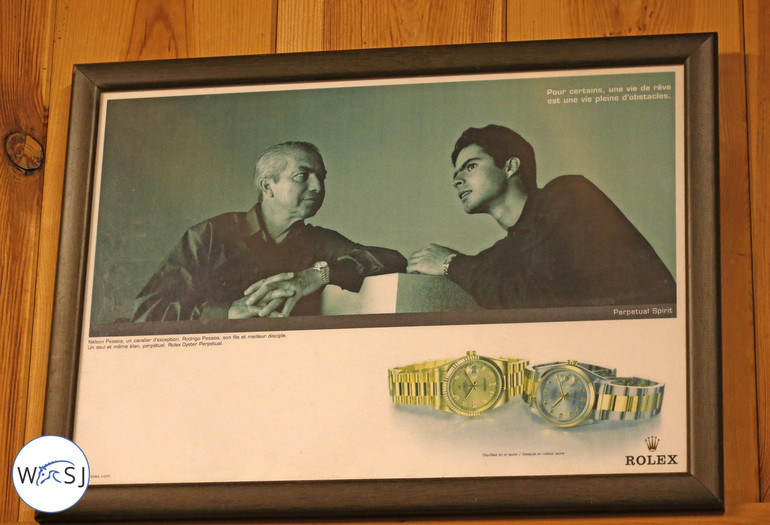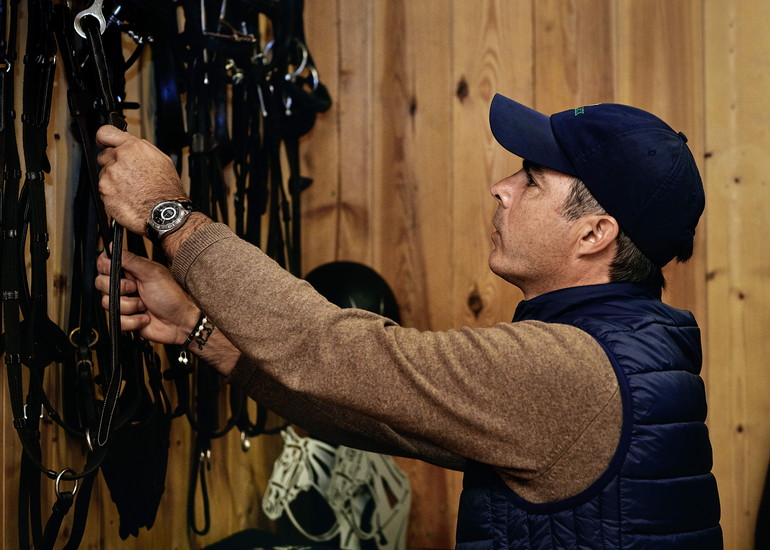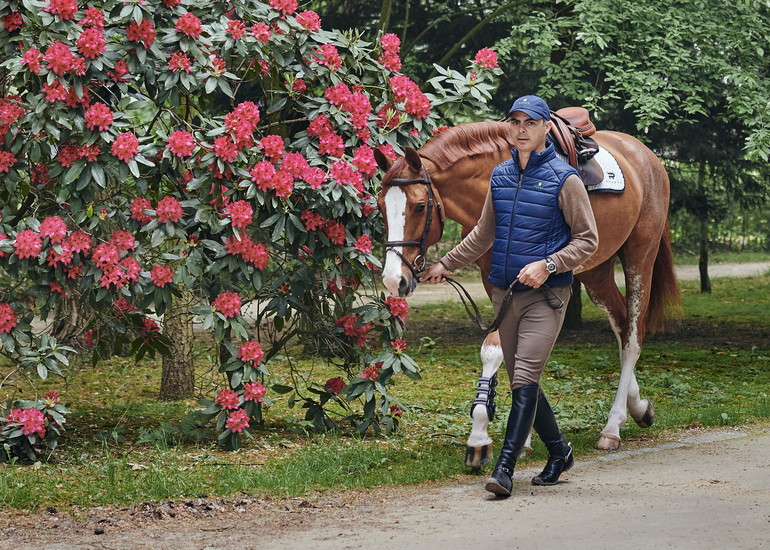Thanks to an invitation from Rolex, World of Showjumping got to spend a day with Brazilian super-star Rodrigo Pessoa at his current European base in Belgium.
Spread out in a series of three articles, the Olympic gold medallist talks about growing up a Pessoa, the most influential horses in his career, highs-and-lows, making negative into positive as well as the future of the sport – and of course how he combines being Chef d’Equipe for Ireland with his own riding.
For a few years, Rodrigo has been renting stables in Belgium during the summer season. “We had a facility a couple of minutes from here that we decided to sell some years ago as it was very big and I spend more and more time in the US. To have a big place like that and not be there that much was getting difficult. Then we came here to this magnificent place that we really enjoy since it is so natural. We rent some of the facility here from a lady who does eventing and she spends most of her summer in England so we have it a little like our own place during that time. I actually competed at this yard several times with my ponies when I was a kid, so we knew the place even though it has been rebuilt since then,” Rodrigo explains.
The Brazilian rider has been based in Belgium for over thirty years, and ended up there for practical reasons. “For our culture it would have been ‘closer to home’ to move to Spain or Portugal, but then the travel for the horses would have been way too long. So that is how we ended up in Belgium in the first place. It was for the horses and for our career,” Pessoa says.
Today, the Brazilian rider rents ten stables – all outside boxes with a beautiful view of the forest. “I really like this outside stable since it is so natural for the horses. I prefer to be outside,” he tells.
When the outdoor season is over in Europe, Rodrigo and his team heads over to the U.S. to compete. “Then we jump there in September and October, have a show break during November and December since there are very little shows then to start up in January again. January, February and March are really intense months. In April, we go back to Belgium,” he tells.
Rodrigo’s life changed quite a lot over the last couple of years, and he went from having a big organisation with a lot of staff to now have a much smaller team. “I enjoy riding very much and I like to compete, but I was needed to do other things as well. So coaching has become more of my day-to-day now, and I’m obviously with the Irish team since last year. I still enjoy riding and we normally have between 6-10 horses, also some young ones that we are developing for the future now – without any pressure and without any commitment. There is no time line, but I would like to be ready for the Pan Am Games next year and if I have a horse for the next Olympics I would like to go there. But I have been through all this so it is not for me to go there just to participate. I want to go if I have a real chance; I really want to do well. So that is why we keep looking for that special horse, which is not easy to find. I have some young ones that are interesting though,” Pessoa tells.
Twelve years ago, Rodrigo went to Florida and the Winter Equestrian Festival for the first time and has done so ever since. “Florida is good, since you can do both the coaching and compete yourself. You are in the same place for three months, something that I discovered 12 years ago and that I really liked. To sleep in the same bedroom for three months, I had never done that for 25 years so once I started that I wanted to continue to do it.”
At the moment, Rodrigo’s stable is filled up by Status – Rodrigo’s previous Grand Prix horse that is now being competed by his wife Alexa – as well as Alexa’s second horse Little Rock, Jordan II, California, Alone de la Rouque, ZE Carioca and Umeunig – that is owned by one of Rodrigo’s students.
As to the daily routine in the stables, Rodrigo has some clear preferences. “I think it is really important for the horse to move a lot,” Rodrigo says. “Our horses go on the tread mill, in the paddock and are ridden. We really try to get them out in the paddock every day, it is important for their mind. It is always a bit of a risk, but it is worth the risk. Any time you bring them back to nature is good, because there is where they belong. They don’t belong in a stall. We try to make it as natural as possible.”
It is expensive to have horses at the top level of the sport, and Rodrigo estimates that every horse costs about 50-75 000 Euro a year. “This is including staff, travelling, veterinarians, food and daily costs like that. If you count on 60 000 Euros as an average, with ten horses that is 600 000 Euros a year – and that is before purchasing any horses. So it is expensive. You need backers, sponsors and owners to help you.”
Rodrigo is of the opinion that our sport has developed drastically financially over the last years, which he believes is not ideal. “In one way it is positive, since good riders really can make a living from the sport these days. They can earn well – not like football or tennis – but they can earn well without having to deal or coach. It is possible to make a proper living from just competitions. But the negative side of it is that the calendar is exploding with shows, so it is tougher on the horses. We jump the horses a lot more, they travel much more and that is why they last less,” Rodrigo says.
“Everybody wants to have a horse show now, they are not all great, but they are all full. Everybody wants to jump. There are a lot of choices for the good ones, which makes everybody raise their games. The world today is unfortunately driven by money. It is tough, because sometimes you lose the perspective on the real sport, the real competitors. It is sometimes hard to find the balance between the financial aspect, the right competitors at the right shows and the right horses to the right people.”
For years, Rodrigo has been very active in the International Jumping Riders Club and is one of those in favour of an invitation system that follows a 60-20-20%-rule for every show. “The rule of the FEI is 60-20-20%, and unfortunately we must say that the FEI hasn’t really done their job to make sure the rule is followed by everyone. Actually they are the first one to break it. I think every show organizer are as important, but they are not treated equally,” Rodrigo says.
With the development of the sport, does Rodrigo believe it will be possible to do it without a big purse or substantial financial backing? “People that don’t come from a wealthy family but are talented – hopefully their talent will be recognized by professionals and they can go to work in a yard and ride under the best riders for a while and develop themselves and learn and be spotted by an owner that wants to invest in them. It is important for the young talented riders of today to really work hard and put themselves in a position where they can be seen and linked to a big established rider, that is where they have their best chance. “
As an example, Rodrigo mentions Kent Farrington – another rider supported by Rolex – that really worked his way up. “Kent Farrington came up from the heart of Chicago with no horse back ground, no wealth. Just by talent and hard work he made it to the top. A lot of riders comes from normal middle-class families so it absolutely possible. But it is a lot of sweat that goes into it,” Rodrigo says.
For years, one of Rodrigo’s biggest sponsors has been Rolex, how important has it been for him to have their support? “Rolex has been an unbelievable partner, we will celebrate our 20 years together in 2019. We have a very special partnership and they are more than a sponsor, we have become friends and family. Rolex is an unbelievable brand that really helps you every step of the way. They picked me up in 1999 when I had done a couple of good things and through all these years they been there, through the good and the bad moments. They have always been very loyal and it is a real honour to represent a brand like this.”
Rolex not only sponsors several top riders, they are also behind the prestigious Rolex Grand Slam of Showjumping. The Rolex Grand Slam now count two indoor and two outdoor events – Aachen, Spruce Meadows, Geneva and Indoor Brabant in Den Bosch. “The Rolex Grand Slam has created a tremendous buzz in our sport. We had one rider who was able to achieve winning the Rolex Grand Slam right in the beginning, which was very impressive. That proves that it is very, very hard, but possible. I think it is a great initiative to have linked those events together and create this. That is money being spend in a good way, and is really in favour of the sport. The bonus goes to someone that achieved something really remarkable.”
A big thanks to Rolex for inviting us to this meeting with their Testimonee Rodrigo Pessoa!
Text © World of Showjumping // Photos © Rolex/Guillaume Mégevand and Jenny Abrahamsson.
No reproduction without permission!



